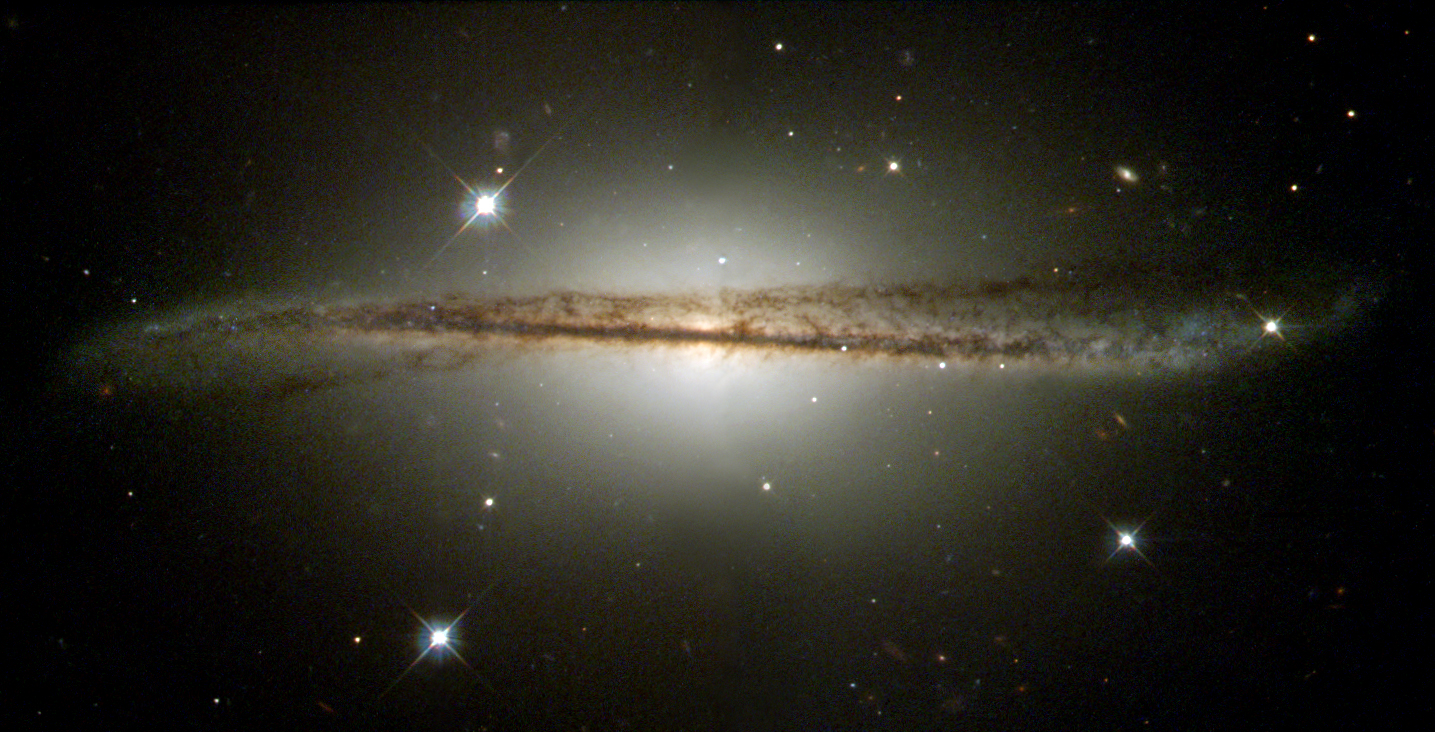ESO 510-G13 is an extragalactic spiral galaxy that has attracted the attention of the scientific community due to its astronomical classification. Located approximately 150 million light-years from Earth, this galaxy can be observed in the Centaurus constellation. Cataloged based on observations conducted by ESO (European Southern Observatory), this celestial object has gained a place in scientific literature particularly due to its warped and distorted dust lane.

ESO 510-G13 Galaxy (NASA)
General Characteristics
- Galaxy Type: Distorted edge-on spiral galaxy (Spiral Galaxy with warped dust lane)
- Location: Centaurus constellation
- Distance: Approximately 150 million light-years
- Catalog Names: ESO 510-G13, PGC 49473
- Observed With: Hubble Space Telescope, various ground-based observatories
The galaxy is known especially for its warped and twisted dust lane that becomes prominent when viewed edge-on. This structural distortion is considered to be the result of past collisions or close gravitational interactions.
Morphological Structure
The structural features of ESO 510-G13 deviate to some extent from the classic spiral galaxy model. The flat disk of the galaxy is intersected by an unusually warped dust lane. This becomes particularly noticeable when observed edge-on, where the dust appears as a dark band concentrated along the plane of the disk. Images obtained from the Hubble Space Telescope reveal a structure in which the dust lane blocks light and curves inward toward the galaxy's center.
Such distortions are significant indicators of galactic interactions and provide fundamental data in understanding the role of collisions in galaxy evolution. The warp in the dust lane is thought to indicate that the galaxy may have collided with or absorbed a smaller galaxy in the past.
Star Formation and Gas Content
Spectral analyses of ESO 510-G13 suggest that the galaxy may be active in terms of star formation. The dust lane has the potential to contain molecular gas required for star-forming regions. However, due to limited studies in this area, more detailed data is needed to determine the star formation rate and specific regions of activity.
Observations in radio and infrared wavelengths are critically important for determining the amount of hydrogen gas and the distribution of molecular clouds within the galaxy. A detailed spectral mapping study has yet to be completed in this regard.
Dynamical Features and Distortion Mechanisms
The galaxy's dynamic structure deviates from classical models due to the warped dust lane. Possible causes of this warp include:
- Galactic mergers that occurred in the recent past
- Interactions leading to gravitational distortions
- A dense central gravitational field causing deformations in the gas and dust lanes
These distortions are also important in terms of the galaxy's future evolutionary process. Galaxy collisions and mergers affect not only morphological structure but also star formation rates directly.
Observations and Visual Data
The most detailed images of ESO 510-G13 were obtained by the Hubble Space Telescope in 2001. The visuals reveal structural bends in the central region of the galaxy and details of the dust lane. These data enable certain inferences about the galaxy's three-dimensional structure and internal dynamics.
Scientific Importance and Future Perspective
ESO 510-G13 serves as a model for understanding the effects of galactic interactions and merger processes on galaxies. Structural distortions are evaluated as one of the main dynamics that trigger galaxy evolution, and this galaxy can be modeled in comparison with other systems possessing similarly distorted disk structures.
Future high-resolution spectroscopic observations may provide more comprehensive information about the galaxy's stellar population, gas distribution, and dynamic structure. Moreover, using observatories such as ALMA (Atacama Large Millimeter/submillimeter Array), the molecular gas content can be analyzed in detail.
In conclusion, ESO 510-G13, with its distorted spiral structure and warped dust lane, stands out as a remarkable galaxy and offers a potential example for studies on galaxy evolution. Observational data show that galaxies like this carry the traces of past collisions, allowing for inferences on how galactic dynamics influence morphological structures. However, a full understanding of the galaxy requires more detailed spectroscopic and radio astronomy observations.


